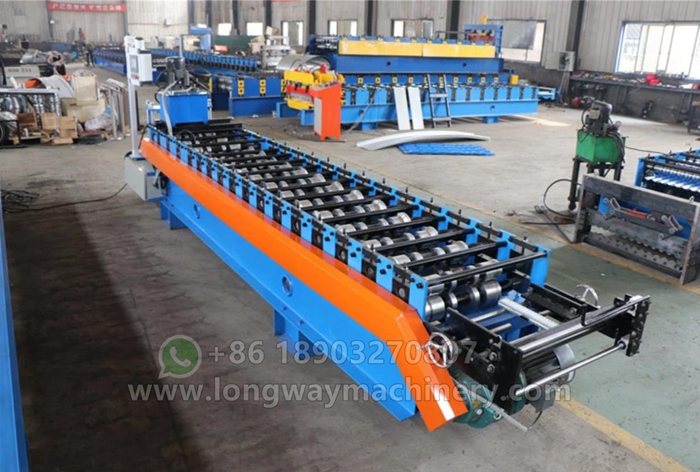Curved Sheet Forming Solutions for Corrugated Manufacturing Companies
The Evolution and Importance of Corrugated Sheet Curving Machines
In recent years, the construction and manufacturing industries have witnessed significant advancements in technology, leading to the emergence of specialized machinery designed to enhance efficiency and precision. One such innovation is the corrugated sheet curving machine, an essential tool for fabricators and builders who require curved corrugated sheets for various applications, including roofing, cladding, and decorative facades.
Understanding Corrugated Sheets
Corrugated sheets are characterized by their wavy pattern, which provides enhanced strength and rigidity compared to flat sheets. Made from materials such as metal, plastic, or fiberglass, these sheets are widely used due to their lightweight nature and excellent resistance to weathering. The unique structure of corrugated sheets allows for effective drainage of water, making them an ideal choice for roofing applications. Additionally, their aesthetic appeal has made them popular in modern architecture, where curved designs can create visually striking facades.
The Role of Curving Machines
The demand for curved corrugated sheets has led to the development of dedicated curving machines. These machines are specifically designed to manipulate flat or semi-finished corrugated sheets into desired curved shapes without compromising their structural integrity. The curving process is essential for projects that require non-linear surfaces, allowing architects and builders to experiment with innovative designs while maintaining the functional benefits of corrugated materials.
The operation of a corrugated sheet curving machine typically involves a series of rollers or guiding devices that gradually bend the sheets to achieve the desired curvature. Advanced models incorporate computerized controls, ensuring precision and repeatability in the bending process. This technological sophistication allows manufacturers to produce large quantities of curved sheets that meet specific specifications, catering to the diverse needs of their clients.
Benefits of Using Curving Machines
1. Increased Efficiency The automation of the curving process significantly reduces labor costs and time, allowing manufacturers to complete projects more quickly. This efficiency is particularly advantageous in large-scale construction projects, where timelines are critical.
corrugated sheet curving machine company

2. Versatility Modern curving machines can accommodate various sheet sizes and materials, making them suitable for a wide range of applications. Whether it’s for industrial buildings, residential homes, or decorative structures, these machines can produce curved sheets tailored to specific project requirements.
3. Quality and Precision The advanced technology employed in curving machines ensures high levels of precision in the bending process. This accuracy minimizes the potential for defects, resulting in finished products that meet stringent quality standards.
4. Design Opportunities By enabling the production of custom-curved sheets, these machines open new avenues for creative design in architecture and construction. Curved corrugated sheets can provide unique visual appeal and functional advantages in both commercial and residential buildings.
Market Trends and Future Prospects
The market for corrugated sheet curving machines is anticipated to grow as more builders and architects embrace innovative materials and designs. This trend is driven by increasing demand for sustainable construction practices, as corrugated sheets, particularly those made from recyclable materials, contribute to eco-friendly building solutions.
Moreover, advancements in technologies such as artificial intelligence and machine learning are expected to enhance the capabilities of curving machines further. These innovations will likely lead to even higher precision and efficiency, solidifying the importance of curving machines in manufacturing processes.
Conclusion
In conclusion, the corrugated sheet curving machine represents a significant advancement in the manufacturing and construction industries. By allowing for the efficient production of curved corrugated sheets, these machines not only improve productivity and quality but also expand the creative possibilities for architects and builders. As technology continues to evolve, it is likely that these machines will play an even more crucial role in shaping the future of construction, enabling designers to push the boundaries of what is possible in architecture and design.
-
Roof Panel Machines: Buying Guide, Types, and PricingNewsJul.04, 2025
-
Purlin Machines: Types, Features, and Pricing GuideNewsJul.04, 2025
-
Metal Embossing Machines: Types, Applications, and Buying GuideNewsJul.04, 2025
-
Gutter Machines: Features, Types, and Cost BreakdownNewsJul.04, 2025
-
Cut to Length Line: Overview, Equipment, and Buying GuideNewsJul.04, 2025
-
Auto Stacker: Features, Applications, and Cost BreakdownNewsJul.04, 2025
-
Top Drywall Profile Machine Models for SaleNewsJun.05, 2025








